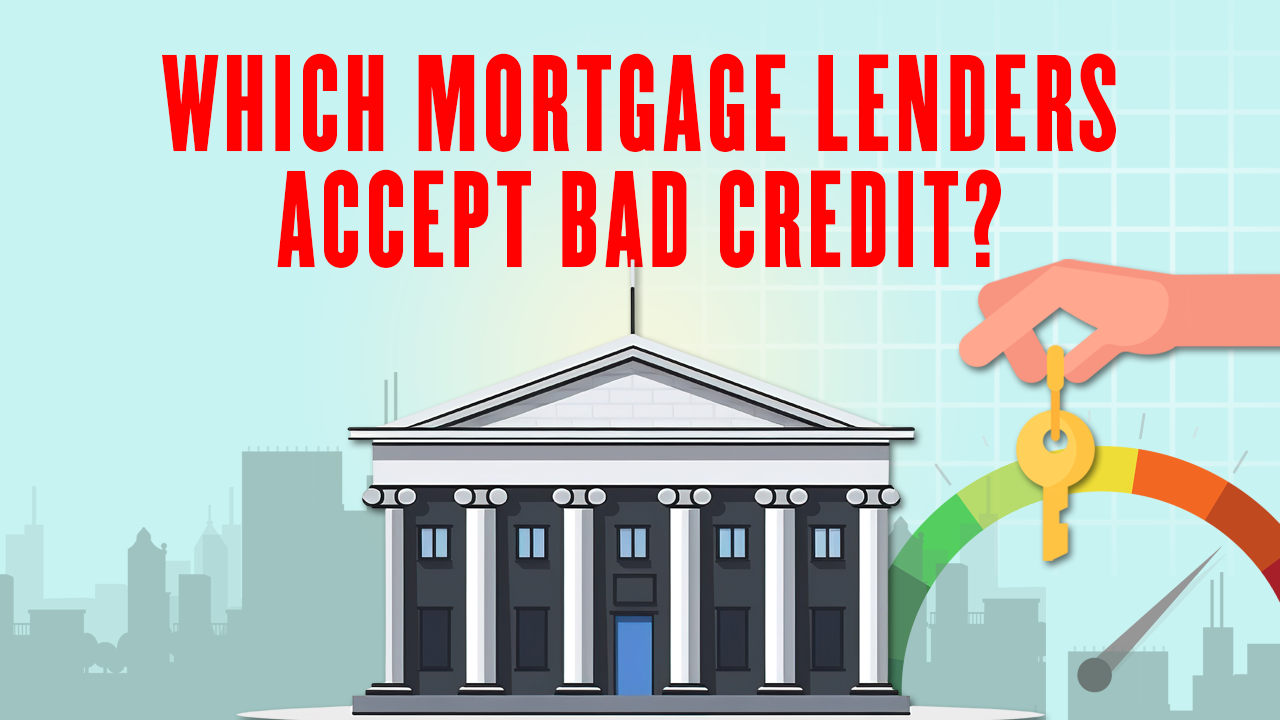Securing a buy-to-let mortgage with a less-than-perfect credit history is undoubtedly challenging, but it’s not an insurmountable hurdle. The key to your eligibility largely depends on several factors, including the nature, recency, and underlying reasons behind your credit issues. Smaller, isolated problems on your credit report may be viewed more leniently than significant, recurring ones. Additionally, the length of time that has passed since these issues occurred can play a critical role in enhancing your chances of approval.
Credit problems can encompass a variety of issues, such as late payments, defaults, County Court Judgments (CCJs), and more. The severity and frequency of these blemishes on your credit report will influence how lenders perceive your creditworthiness. To successfully navigate this complex landscape and improve your chances of securing a competitive buy-to-let mortgage, it’s highly advisable to seek the assistance of a specialist mortgage broker. They possess the expertise to guide you through the process, help you repair your credit, and connect you with lenders who are more willing to work with individuals who have faced credit challenges. By partnering with a mortgage broker, you can increase your odds of obtaining a buy-to-let mortgage that suits your investment goals, despite your credit history.
Can you get a buy-to-let mortgage with bad credit?

Is it possible to secure a buy-to-let mortgage with bad credit? Yes, it’s possible, although premium rates may be elusive. Eligibility largely hinges on the nature, recency, and cause of the credit blemish. Smaller issues with credit and extended time since the incident enhance prospects of securing a favourable buy-to-let mortgage.
It’s possible to get a buy to let mortgage with the following credit issues:
- Late payments
- Defaults
- Mortgage arrears
- CCJs
- Debt Management Plan (DMP)
- IVA
- Bankruptcy
- Repossession
- Use of payday loans
- Low credit score
How to get a buy-to-let mortgage with bad credit

To start your journey towards securing a buy-to-let mortgage despite bad credit, your first step is to consult with a specialized mortgage broker. When you connect with us, you can submit an enquiry, and we will link you with an advisor who possesses the necessary expertise.
Your buy-to-let mortgage advisor will guide you through these crucial phases:
- Retrieving your credit reports: Your broker will help you access your credit reports, often through a free trial. They will then suggest strategies to minimize the impact of your bad credit, including methods for expedited repair and improvement.
- Identifying the most suitable buy-to-let lenders for individuals with adverse credit: Attempting this independently can result in a higher risk of rejection or unfavorable lending terms. In contrast, your broker maintains strong professional relationships with lenders best suited to your specific situation. They may even secure an exclusive arrangement on your behalf, increasing your chances of success.
How does bad credit affect a buy to let mortgage?
Bad credit can encompass various issues, each with its own implications. Missing a payment differs significantly from having a CCJ, just as an IVA varies from having defaults. How does this affect your buy-to-let mortgage application?
Before applying, reviewing your credit file is prudent. This action reveals precisely what lenders will observe during their credit assessments, empowering your advisor to better prepare your application.
1. Late payments and mortgage arrears
Late payments, while not severe, can affect your buy-to-let mortgage approval. Some lenders are stringent and view late payments as red flags, with the type of late payments also playing a role.
Mortgage arrears are the most serious form of late payment, but being clear of them can benefit your application. Late payments on unsecured credit, like phone bills, are less concerning. However, some lenders won’t tolerate any late payments.
Lenders examine the number and recency of late payments. Recent late payments have a more significant impact than older ones. Accumulated outstanding arrears are a concern for lenders.
Securing a buy-to-let mortgage after late payments is possible. Consulting a specialist with experience in this area can enhance your chances and reduce the risk of rejection.
2. Defaults
Defaults on your credit file can impact your buy-to-let mortgage approval. If your default is over six years old and your credit has improved, approval is likely, provided you meet buy-to-let criteria like affordability.
Defaults less than six years old may lead to rejections from some lenders, but an advisor can enhance your chances. Your assessment depends on the default’s size, number, and recency. Smaller, older defaults are preferred by lenders.
Large, recent defaults make it harder to secure a buy-to-let mortgage but approval remains possible. Defaults involve various factors, and being declined can affect future mortgage prospects. Consult our experienced advisors to explore suitable lenders.
3. County Court Judgements (CCJs)
Securing a buy-to-let mortgage with a CCJ is feasible with the right strategy. However, it’s not advisable to approach lenders independently.
Lenders typically consider the following regarding your CCJ:
- Registration date
- CCJ value
- Number of CCJs
- Satisfaction status
Your chances improve significantly if your CCJs were registered more than two years ago. Recent CCJs, within the last year, can hinder mortgage approval. Nevertheless, a few lenders may consider your application if you meet their criteria.
The value and quantity of your CCJs also influence lenders’ decisions regarding your mortgage. Having satisfied CCJs strengthens your buy-to-let application.
4. Debt Management Plans (DMP)
Obtaining a buy-to-let mortgage while in a Debt Management Plan (DMP) is feasible. Typically, a DMP requires a specialist lender. However, if you had a DMP in the past and successfully cleared your debt, mainstream lenders might consider your application.
The primary concern with a DMP is its association with other credit issues. These credit problems often pose greater obstacles than the DMP itself.
A DMP’s purpose is debt management. Lenders will evaluate your debt management during the DMP. Demonstrating responsible financial conduct can boost your mortgage prospects, while accumulating additional debt can have adverse effects.
Buy-to-let mortgages involving debt management plans are regarded as specialized cases. Advisors must consider various factors within the case before approaching a lender.
5. Bankruptcy
To apply for a mortgage, you must first be discharged from bankruptcy; securing any type of mortgage during bankruptcy is generally impossible.
Obtaining a buy-to-let mortgage after bankruptcy is feasible and potentially more accessible with experienced advisors. Many lenders outright reject applicants with any history of bankruptcy, regardless of the discharge duration.
Advisors can filter out such lenders, concentrating solely on suitable options. If your bankruptcy discharge is recent, a specialist lender may be more appropriate. If your discharge occurred over six years ago, advisors can approach a broader lender base, granting access to more favorable mortgage rates.
6. Home repossession
Obtaining a buy-to-let mortgage after experiencing property repossession can be challenging. The possibility of approval depends on when the repossession occurred and the circumstances surrounding it.
Certain specialist lenders may consider applicants with a history of property repossession, often accompanied by other credit issues. Lenders will scrutinize all credit-related aspects of your application.
If the repossession incident transpired more than six years ago, and you’ve since maintained a pristine credit record, you might be eligible for competitive mortgage deals. Nevertheless, repossession constitutes a severe form of adverse credit, leading buy-to-let lenders to conduct thorough assessments of your application.
In cases involving the repossession of a buy-to-let property, lenders may adopt a more lenient stance. Landlords occasionally encounter difficulties with tenants who fail to pay rent. If you can demonstrate an otherwise sound financial history in such situations, it can bolster your mortgage application.
Which credit issues will lenders accept?
Credit problems can encompass a range of issues, from a single missed payment to more serious situations like bankruptcy or repossession. Let’s analyze the spectrum of issues that buy-to-let mortgage lenders might take into account, presented here in order of increasing severity, from less critical to more challenging.
How much deposit will you need?
Normally, a buy-to-let mortgage requires a minimum deposit of 25%. But if you have bad credit, you’ll likely need to provide a larger deposit. The exact amount depends on factors like the nature, seriousness, and circumstances of your credit issue. However, it’s reasonable to expect that approval is unlikely with less than 25-30%.
Which mortgage lenders accept bad credit?

Several lenders extend buy-to-let mortgages to applicants with credit challenges. However, it’s crucial to note that certain lenders have stringent credit criteria, rejecting applicants with any credit issues.
Lenders follow distinct internal procedures for mortgage approval. While some decline applicants with adverse credit, others remain open to considering them. Understanding the two primary categories of lenders can be beneficial:
- Mainstream Lenders
- Specialist Lenders
It’s commonly assumed that specialist lenders are the go-to choice for individuals with bad credit. However, this isn’t always the case. Depending on the nature of your credit issues, you might still qualify with a high street lender. Nevertheless, obtaining approval necessitates expert guidance and a meticulously prepared application. Severity varies among credit issues, and some lenders may not even consider older issues, making timing a critical factor.
Traditional banks are generally more cautious. Each lender maintains distinct criteria. A few examples are detailed below:
- TSB: Applicants with arrears may be assessed, but they will automatically decline those with mortgage arrears exceeding £100 in the past year.
- Shawbrook Bank: May deem a prior repossession acceptable if it occurred more than two years ago.
- Leeds Building Society: Requires a minimum six-year gap before considering a buy-to-let mortgage application from someone with a repossession history.
- HSBC: Does not accept applicants with repossessions, regardless of the time elapsed.
Interest Rates on buy-to-let mortgages with bad credit
As of August 2023, standard interest rates for buy-to-let mortgages surpass 6%. However, individuals with adverse credit may face even higher rates. The extent of the increase hinges on the specifics of your credit issues. Nonetheless, a skilled mortgage broker can assist you in securing a competitive deal despite these challenges.
More Property Blogs HERE:
Can you make money investing in property?
Section 24 Effect on BTL Property
How do I start a property rental business in the UK?
How to add value to your rental property
What are the requirements for a HMO UK?
How to convert a property into an HMO in 2023
Is refinancing the same as restructuring?
What is Refinancing? How does it Work?
BRR Property Deals: Buy Refurb Refinance in the UK
Should You Give Up on Buy-to-let?
A Guide to Section 24 Tax Change For Buy-to-Let Investors
Do I need a Licence to rent out my property UK?


